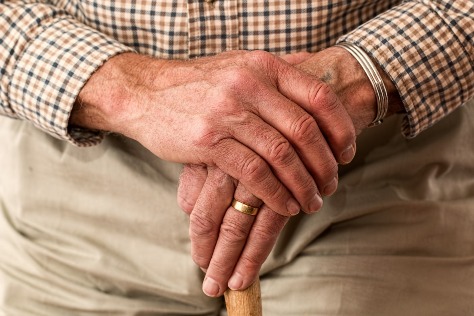Canadian Health Awareness Society : Resources
| Others - Contents |
| Others - Detail |
Healthy aging: prevention of falls
Dr. Kwang Yang, Family Medicine

Falls are a leading cause of injury and loss of independence in the elderly. As physical changes and health conditions being part of the normal aging process, increase the risk of falls. Due to falling, numerous patients are admitted to the hospital for fractures, chronic pain, haemorrhage, and physical injuries, which have an adverse impact on their quality of life and longevity. Thus, it is important to learn about some simple fall-prevention measures and ways of maintaining a healthy bone density in order to live a healthy lifestyle.
There are many reasons older people fall, and majority results from interactions between health conditions and a person’s environment. Statistics have shown that impairment in balance, gait, muscle strength and vision increase the subsequent risk of falling. Conditions such as arthritis, depression, and concurrent use of four or more medications also directly lead to recurrent falls. Moreover, some may simply have lost their footing when stepping off a road curb or slipped wearing unfitting shoes.
Consider 9 simple yet effective strategies to prevent falls:
1. Talk to your doctor:
- Learn about your medication: doctors can review the medications for side effects that may increase the risk of falling, and consider weaning off the medications that cause tiredness, sleepiness or dizziness
- Any health conditions that may cause a fall: many health conditions such as vision, ear disorders, and arthritis increase the risk of fall so it is important to discuss health conditions and treatments for them.
2. Wear safe shoes
- Foot problems can impair an older adult’s balance and change the way they walk. Footwear styles that have minimal contact with the ground such as high heels or that have poor grip can also cause problems in balance and gait. It is often a combination of foot problems and footwear that increase the risk of falls.
- Consider shoes with the following characteristics: fitting properly Laces; buckles fastened; non-skid soles; low heel; firm heel collar to provide stability; thin firm midsole so one can “feel” and “comprehend” the underlying surface; broad, flared heel to maximise contact with the ground; correct length allows normal foot function
- Avoid shoes that: slip off while walking; no support for feet; no heel support; slippery; cause trip hazard
- Talk to a podiatrist or footwear specialist to invest in the safety and comfort of a pair of shoes
3. Make home safer
- Floors: keep all floors clean and dry; remove any spills such as oil, fat, water and flour immediately; remove all obstacles that could cause a slip such as foot stools and electrical cords; change any loose mats or scattered rugs; use non-skid floor wax
- Steps and stairs both indoors and outdoors: repair any damaged steps; clean the stairs so it’s not slippery; install firm handrails and use them all the time when going up or down stairs; good lighting on the stairs
- Store thing on lower shelves to avoid reaching high or climb
- Keep a phone and a flashlight nearby.
- Keep house well-lit to maximize vision
- If there are pets, watch out for them under the feet and train them not to jump or get underfoot. Consider getting a collar with a bell so it is easy to know when the pet is nearby.
- Bedroom: Hospital bed with automatic control; bedside safety rail; a comfortable and safe walker
4. Prevent outdoor falls
- Use a safe walking aid or a safe walker
- Wear hip protector
- Keep hands free by using a backpack
- Have a family member or friend supporting while walking
- Sprinkle salt on icy areas during the winter
5. Physical Exercise:
- Regular gentle exercises or any enjoyable physical activity will be beneficial and will make one fitter and reduce risk of falls
- Participate in regular appropriate physical activity such as yoga, walking, tai-chi, etc
- Choose exercises that improve balance and muscle strength
- Have a medical checkup before commencing any new physical activity
6. Stay safe while bathing
- Non-slippery bath floor
- Bath chair
- Bath rail support
7. Keep bones strong:
- Arrange for a bone density test with your family doctor
- Consume enough food sources that has Calcium source such as milk, yogurt, cheese and dairy products.
- Get enough Vitamin D from fish, beef liver, cheese , egg yolk and regular sun exposure
8. Staying independent and take extra care when living alone:
- Learn how to get up from a fall and if one is difficult to get up alone see a physiotherapist for help
- Have contact with a family member or friend so they know whereabouts of the elderly
- Carry a cell phone all the time so it’s possible to call for help quickly when needed
9. Washroom safety
- A safe walker that is accessible to washroom
- A toilet with safety rail
- Non-slippery washroom floor
- A commode by bedside if necessary
The Canadian Health Awareness Society is a registered non-profit organization. Our Mission is to promote health awareness on health issues for all Canadians by education, support and advocacy. Website: healthleader.ca.
References:
- HealthLink BC. Fall prevention. British Columbia government website. https://www2.gov.bc.ca/gov/content/health/managing-your-health/injury-prevention/seniors-fall-prevention. Updated January 24, 2018. Accessed January 24, 2018.
- Healthwise Staff. Preventing falls in older adults. WebMD website. https://www.webmd.com/healthy-aging/tc/preventing-falls-topic-overview#1. Updated November 1, 2014. Accessed January 25, 2018.
- Mayo Clinic. Healthy aging. Mayo Clinic website. https://www.mayoclinic.org/healthy-lifestyle/healthy-aging/in-depth/fall-prevention/art-20047358. Updated October 16, 2016. Accessed January 26, 2018.
- Tinetti, M. Preventing falls in the elderly persons. N Engl J Med. 2003;348:42-49. DOI: 10.1056/NEJMcp0207